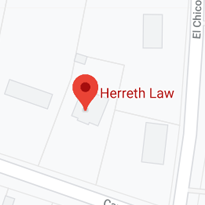 Many vehicle collision and other claims hinge on legal loopholes which are relatively easy to explain but rather difficult to visualize. Since so many injury victims in Fort Worth are visual learners, we wanted to examine some of the most common insurance company defenses in a rather nontraditional way.
Many vehicle collision and other claims hinge on legal loopholes which are relatively easy to explain but rather difficult to visualize. Since so many injury victims in Fort Worth are visual learners, we wanted to examine some of the most common insurance company defenses in a rather nontraditional way.
Compensation in negligence claims usually includes money for economic losses, such as medical bills, and noneconomic losses, such as pain and suffering.
Assumption of the Risk
This defense is very common in premises liability claims, such as swimming pool drownings, dog bites, and falls. Factually, it usually centers on a warning sign (“No Lifeguard on Duty,” “Beware of Dog,” or “Wet Floor”). Legally, it has two basic elements:
-
Voluntary assumption of
-
A known risk.
This second element is often missing, as it is in this clip from Patrick Smartpants. Patrick voluntarily ran toward the cliff. But, he could not read or understand the sign. Therefore, he did not assume a known risk.
Such facts come up often, and not just when a friendly game of tag goes way off the rails. Many victims, such as young children, have limited English proficiency or reading skills.
Last Clear Chance
This vehicle collision defense is a mainstay in motorcycle accident claims, probably because so many of these claims involve a left turn against traffic.
Sometimes, a rider or another motorist has a reasonable chance to avoid a collision. For example, the rider could change lanes or stop suddenly. If the rider fails to take advantage of this chance, the rider, and not the other driver, is legally responsible for damages.
This clip from Planes, Trains, and Automobiles illustrates the last clear chance defense. Even though Dell was “going the wrong way,” the oncoming semi-trucks may have been legally responsible for this wreck.
This stretch of highway was wide and flat. As a result, the trucks probably had plenty of time to pull over to the shoulder or otherwise avoid the crash. That’s especially true because commercial operators, like truck drivers, have a higher duty of care than noncommercial motorists.
Sudden Emergency
This third defense is a staple in pedestrian injury claims. Insurance company lawyers often claim that the victim “darted out into traffic.” This argument sets up the sudden emergency defense, which has two basic elements:
-
Reasonable reaction to
-
A sudden emergency.
A jaywalking pedestrian is not a completely unexpected event, so it is generally not a sudden emergency. That designation belongs to things like hood fly-ups.
This clip from Tommy Boy clearly illustrates the sudden emergency defense. The hood flyup is a sudden emergency. But Tommy drove recklessly after the sudden emergency. Since he did not react reasonably, the defense would not apply.
Insurance company lawyers usually pull out all the stops in an effort to deny fair compensation to accident victims. For a free consultation with an experienced personal injury attorney in Fort Worth, contact Herreth Law. After hours visits are available.

